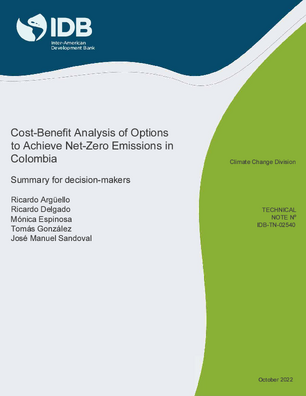Cost-benefit analysis of options to achieve net-zero emissions in Colombia
Date
Oct 2022
This document presents a scenario of sectoral transformations that would allow Colombia to achieve carbon neutrality in 2050 and quantifies the associated costs and economic benefits derived from implementing these transformations. The alternatives presented are not intended to be prescriptive, recognizing that there are multiple options available to achieve the climate goals defined by the country. The most relevant contribution of this analysis has to do with estimating the level of changes required and the associated costs and benefits. The following sectors were assessed: agriculture, energy, transportation, and waste management. It was identified that the first three sectors achieve net benefits by implementing decarbonization trajectories if not only the implementation costs are accounted for but also the savings associated with, for example, lower operating costs, higher productivity, savings in damage to health or avoided costs because of climate change on the economy. The cost-benefit analysis was performed using three different levels of the discount rate, and in all the cases, carbon neutrality is reached with net economic benefits (exceeding the associated costs).




